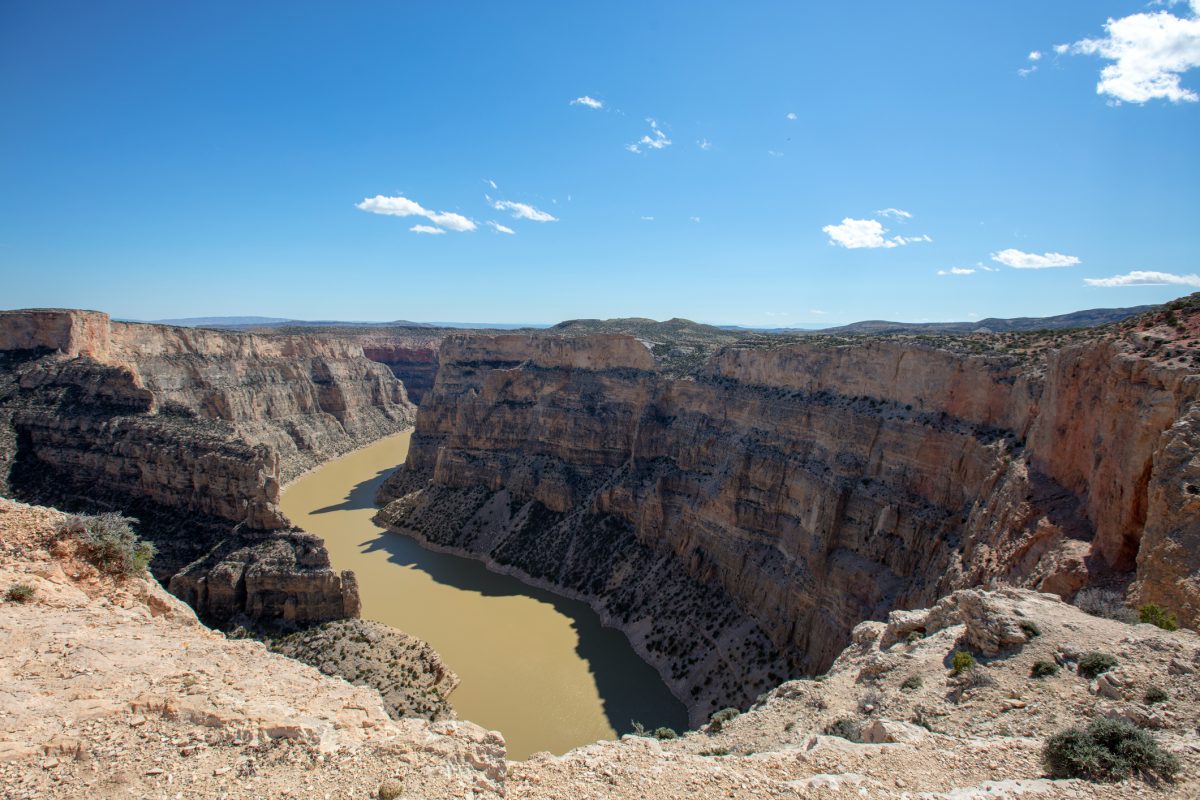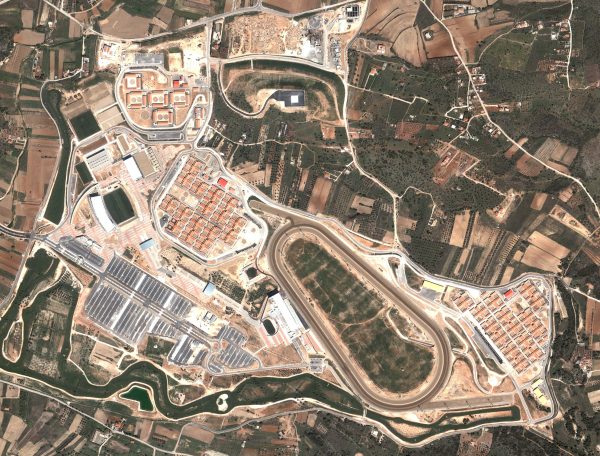
Land on Native American reservations is a mix of privately owned parcels with standard transfer rights and allotted-trust parcels without them. Researchers analyzed if and how these different property rights have affected current land use. Credit (Crow Indian Reservation, Montana): Henry Turner|Dreamstime.com
Inheriting land can be challenging when the heirs don’t get along or disagree about its future use. But in most cases, the number of heirs is small and standard property transfer rights apply. The situation can be much more complex for land on Native American reservations.
Assistant professor Dustin Frye and colleagues recently analyzed how property rights that resulted from historical injustice and prohibited land transfers have affected economic development up to eight decades later.
“Land was one of the major assets tribes retained following treaties with the U.S. government in the late 1800s, and its unique ownership structure is a fundamental part of broader economic development questions,” says Frye, who joined AAE in fall 2023 from New York’s Vassar College. “This topic is also of personal interest because the land we analyzed included our family farm in southeastern Montana, close to where I grew up.”
The study’s historical background is the 1887 General Allotment Act, called the Dawes Act after its lead proponent, Senator Henry Dawes. It was the legal foundation for allotting land to Native Americans, a process that had begun decades earlier. Its main rationale was the government’s preference for individual over collective uses of tribal land. This was part of broader cultural assimilation efforts to align the customs and practices of Indian people with those of white settlers.
Native Americans who received tax-free allotted-trust land under Dawes—160-acre parcels per family—had the right to use and benefit from the land but could not sell or lease it. The government’s stated purpose was to protect the land from non-tribal outside interests. Plot selection was allowed but not often used. Allottees also had to follow special inheritance laws.
After the initial restrictions were relaxed in the early 1900s, federal officials could assign full property rights to allottees they deemed “competent.” These tribe members received private ownership titles with transfer rights; the conversion also triggered property taxes. The allotment process ended in 1934 with the Indian Reorganization Act, creating a patchwork of reservation land ownership. About half of all allotments had been converted from tribal-owned to privately owned land at that time.
This is an example of what economists call a natural experiment: The passing of time creates a “test” group exposed to a condition of interest (parcels converted to private ownership) and an unexposed “control” group (non-transferable allotted-trust parcels) that is otherwise similar to the test group.

To compare land use outcomes for test and control parcels, Frye’s team geocoded publicly available data from the Bureau of Land Management. The researchers combined ownership information for about 91,000 parcels (9.5 million acres) with satellite land cover images (1974-2012) from the federally managed National Wall-to-Wall Land Use Trends database. The outcomes of interest were development (residential or business buildings) and cultivation (livestock pastures or cropland). Both represent income-generating land uses for owners.
Although there were no formal selection criteria for the conversions, some conditions may have increased the likelihood of privatization. For example, some plots may have had greater productive potential or some allottees may have appeared more inclined to pursue income-generating opportunities. The researchers accounted for this possibility by comparing adjacent parcels that differed only by tenure type and were otherwise as similar as possible.
They found that plots with full property rights were 13% more likely to be developed and had 35% more land in cultivation. Additional analyses supported at least two plausible reasons for these differences, according to Frye.
The first is that full property rights are a common prerequisite for traditional bank loans, where land serves as collateral. This channel is important as loans are required to finance development activities. These create new labor markets and spur economic growth.
The second channel is an exponentially growing fractionation of land over time in the absence of transfer rights. Under U.S. law, all of a descendant’s heirs receive equal interests in collectively owned land, which has to remain physically undivided. The difficulty of obtaining consensus among tens or even hundreds of claimants for the use of allotted-trust plots makes it next to impossible to develop or cultivate fractionated land in practice, says Frye.
To address these problems, Frye does not suggest privatizing all remaining allotted-trust plots. New kinds of financial institutions are an example of more feasible solutions with fewer legal hurdles.
“These banks, credit unions and loan programs work with Native American communities and their collective decision-makers to alleviate traditional credit constraints,” explains Frye.
Another potential solution: a more gradual conversion process, following the example of Mexico’s 1992 land reform. It empowered leaders of agrarian communities to issue land certificates to peasant farmers. They could initially only sell or lease their parcels within the community. If they used the land productively, the certificates became full property titles that could be sold outside the community. This process resulted in larger, more efficiently operating farms and overall welfare gains.
Frye also notes that federal and state legal changes since 2013 have helped slow down the exponential growth of fractionated ownership, although plots with an extremely large number of claimants will still require creative specialized solutions.
The study analyzed one specific natural experiment, but its results are also relevant for indigenous peoples in other parts of the world whose economic development has been hindered by land use restrictions.
“Our study and others highlight the importance of full property rights for improving labor market and economic opportunities in Native American and other disadvantaged communities,” says Frye. “But there are multiple ways to address historical injustice and increase the productive capacity of land.”